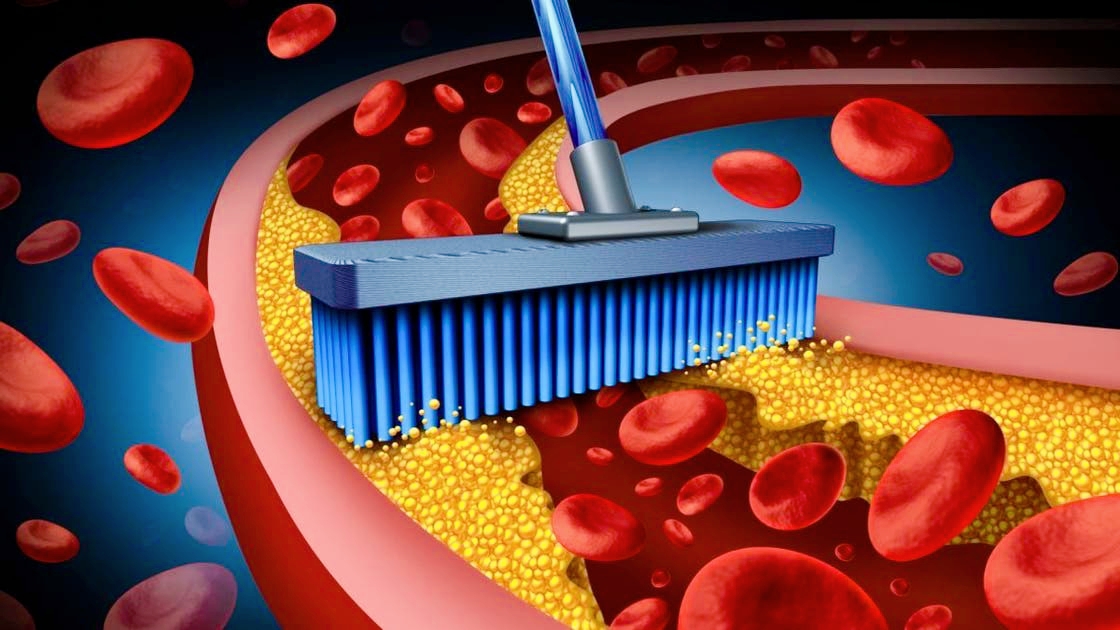How to Identify High Cholesterol Levels Before They Become Dangerous

Cholesterol is a vital fatty substance necessary for the human body, playing a key role in building cell membranes and producing essential hormones.
However, elevated cholesterol levels in the blood can pose serious health risks, as they may lead to arterial narrowing and increase the likelihood of heart disease, strokes, and other severe complications.
This increase often occurs gradually, initially without clear symptoms, making it essential to identify early signs and causes to maintain overall health.
* 5 Warning Signs of High Cholesterol
1 _ Fat Deposits Around the Eyes
The presence of bumps or spots on the skin, known as "xanthomas," often appearing around the eyes, elbows, or knees, as well as a light ring around the iris (arcus senilis), may indicate a buildup of cholesterol in the body.
2 _ Chest Pain or Angina
Fat deposits in the arteries can reduce blood flow to the heart, resulting in feelings of pressure, tightness, or burning during physical exertion or stress, which can escalate to a heart attack if ignored.
3 _ Persistent Leg Pain
Blockages in the arteries supplying the legs can cause feelings of heaviness, burning, or fatigue while walking or exercising, a condition known as peripheral artery disease (PAD).
4 _ Dupuytren's Contracture in the Hand
The contraction of tendons in the ring and little fingers towards the palm, limiting movement, may be a sign of elevated cholesterol or genetic lipid metabolism disorders.
5 _ Chronic Fatigue and Shortness of Breath
Narrowed arteries can decrease oxygen supply to muscles and organs, leading to unusual fatigue and shortness of breath even with minimal exertion.
* Causes of High Cholesterol
Once warning signs are recognized, understanding the causes of elevated cholesterol is crucial for prevention.
1 _ Unhealthy Diet
Consuming foods high in saturated and trans fats, such as fatty meats, full-fat dairy products, fried foods, and processed sweets, can raise harmful cholesterol levels (LDL) in the blood.
2 _ Lack of Physical Activity
Regular physical activity increases levels of good cholesterol (HDL), which helps clear harmful cholesterol from the blood, while inactivity allows cholesterol to accumulate in the arteries.
3 _ Genetic Factors
High cholesterol levels can be attributed to genetic predispositions, such as familial hypercholesterolemia, where the body struggles to break down harmful cholesterol from birth.
4 _ Other Health Issues
Conditions such as diabetes, hypothyroidism, chronic liver and kidney diseases, and autoimmune disorders can affect fat and cholesterol metabolism in the body.
5 _ Smoking
Smoking lowers levels of good cholesterol and raises harmful cholesterol levels, increasing the buildup of fat deposits in the arteries.
* Conclusion
Elevated cholesterol levels can develop silently, but their impact on the cardiovascular system can be severe if not detected early. Recognizing warning signs and adhering to a healthy lifestyle, including a balanced diet, regular exercise, quitting smoking, and routine medical check-ups, are vital steps in preventing complications.
Following these measures promotes heart and vascular health and protects the body from potential future risks.
